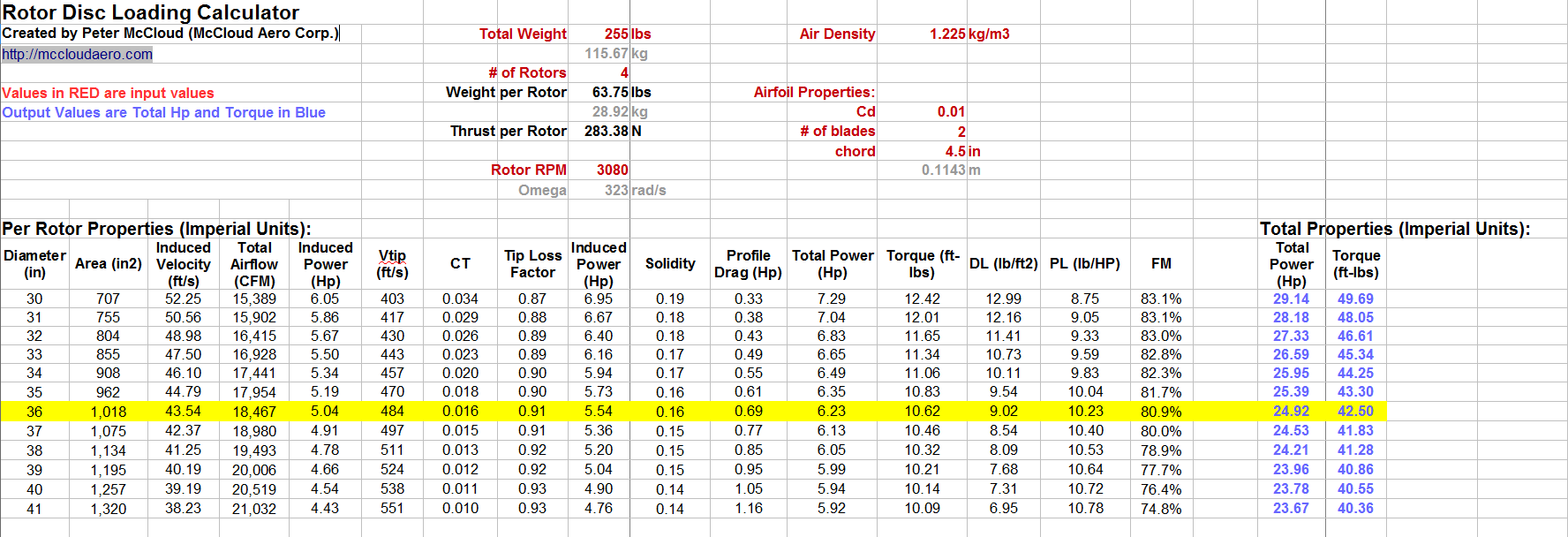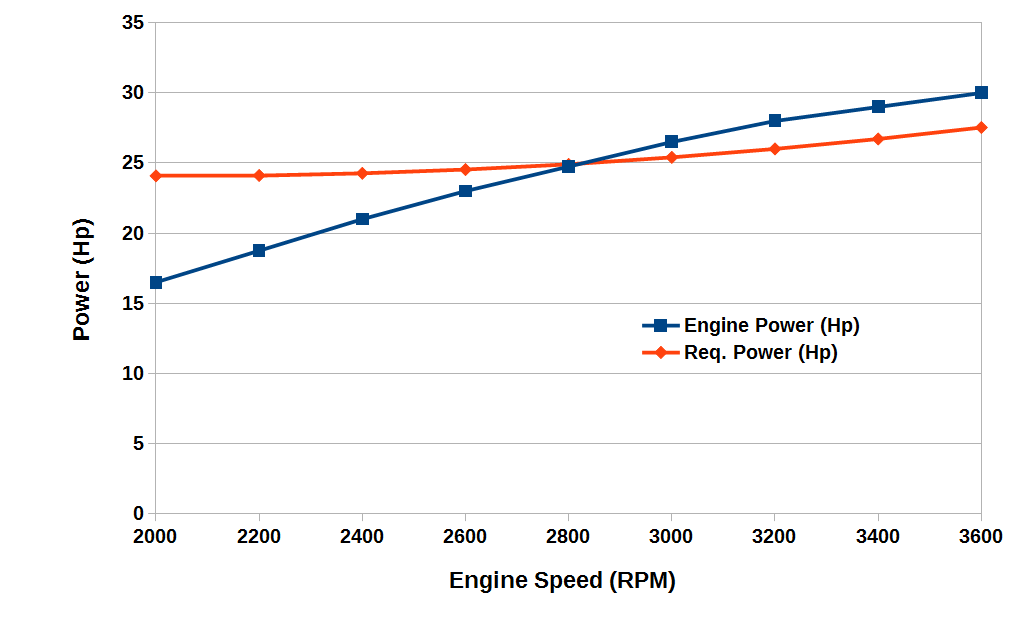During the last test, Goliath was run at full throttle and failed to hover. One thing I did find after going over the vehicle the next day was that the choke was set to 25%. This would prevent the engine from producing full power. I haven't had the opportunity to go back and retest yet. I'd also like to instrument the test stand to measure the thrust before doing any testing. Along those lines I've started a separate hackday project, Drone Test Stand to document those details, so if you're interested in that check it out!
However, before getting into modifying the test stand, the first thing I did was to go back and check the calculations to make sure the engine can produce enough lift. There's been a couple of comments around the interwebs stating that 30 Hp isn't enough to the lift Goliath. I've double checked the numbers before, so I guess it's triple-checked, but it just made since to re-check before investing more time and effort into the test stand. I also haven't documented how I had calculated the power required, so it seemed like a good time to do so.
So I've put together a spreadsheet to calculate the power required and I've placed it on github as part of the documentation. The equations are from "Helicopter Performance" by Donald Layton. Inputs are in red and the output is in blue. Essentially you tell it how much lift you need, the rotor rpm, the air density and the airfoil properties, and it spits out how much power & torque is needed. Here's a screenshot of the results for Goliath.
 For a fully loaded vehicle at 255 lbs, using 36" diameter propellers at 3080 RPM, 25 Hp is required to hover (assuming standard air density at sea level). This would leave a 5 Hp or 20% margin for climb or maneuvering. This isn't much compared to other quad copters, but Goliath isn't intended to be nimble. Eventually ducting will be added that should help to improve these numbers.
For a fully loaded vehicle at 255 lbs, using 36" diameter propellers at 3080 RPM, 25 Hp is required to hover (assuming standard air density at sea level). This would leave a 5 Hp or 20% margin for climb or maneuvering. This isn't much compared to other quad copters, but Goliath isn't intended to be nimble. Eventually ducting will be added that should help to improve these numbers.
One note on the Propeller Figure of Merit (FM) shown in the spreadsheet. This is somewhat equivalent to efficiency. For a vehicle hovering off the ground the efficiency is essentially 0% since you are expending X amount of power to no realized work. Figure of Merit (FM) is calculated by comparing the rotor to an idealized or perfect rotor. For this case Goliath would require a rotor that is 80.9% efficient. A less efficient rotor would require additional power. 80.9% is on the higher side, but it is a doable number.
The last element that needs to be considered is how the power required matches the power produced by the engine. Here is a plot of the power required vs. the engine power.
 The required power curve was created by plugging different RPM values into the spreadsheet. Keep in mind that there is a 1:1.1 pulley ratio between the engine and the rotors so that the rotors spin 10% faster than the engine. Thus for a 2800 RPM engine speed, the rotors spin at 3080 RPM. The two curves cross at 2800 RPM, so for a fully loaded vehicle at 255 lbs the engine should run at that speed.
The required power curve was created by plugging different RPM values into the spreadsheet. Keep in mind that there is a 1:1.1 pulley ratio between the engine and the rotors so that the rotors spin 10% faster than the engine. Thus for a 2800 RPM engine speed, the rotors spin at 3080 RPM. The two curves cross at 2800 RPM, so for a fully loaded vehicle at 255 lbs the engine should run at that speed.
So can Goliath hover? The laws of physics say it's certainly possible. In reality it's more complicated than that and more data is needed to figure out where things are going wrong. These calculations don't account for belt losses (should be low, but it isn't zero) and bearing losses, but there is 20% margin available. If anyone's interested and feels like checking the numbers or calculations in the spreadsheet, let me know if you find anything. Also if you have suggestions on improvements to the spreadsheet let me know.
In the meantime I'll be moving forward on adding thrust measurements to the test stand!
 Peter McCloud
Peter McCloud
Discussions
Become a Hackaday.io Member
Create an account to leave a comment. Already have an account? Log In.